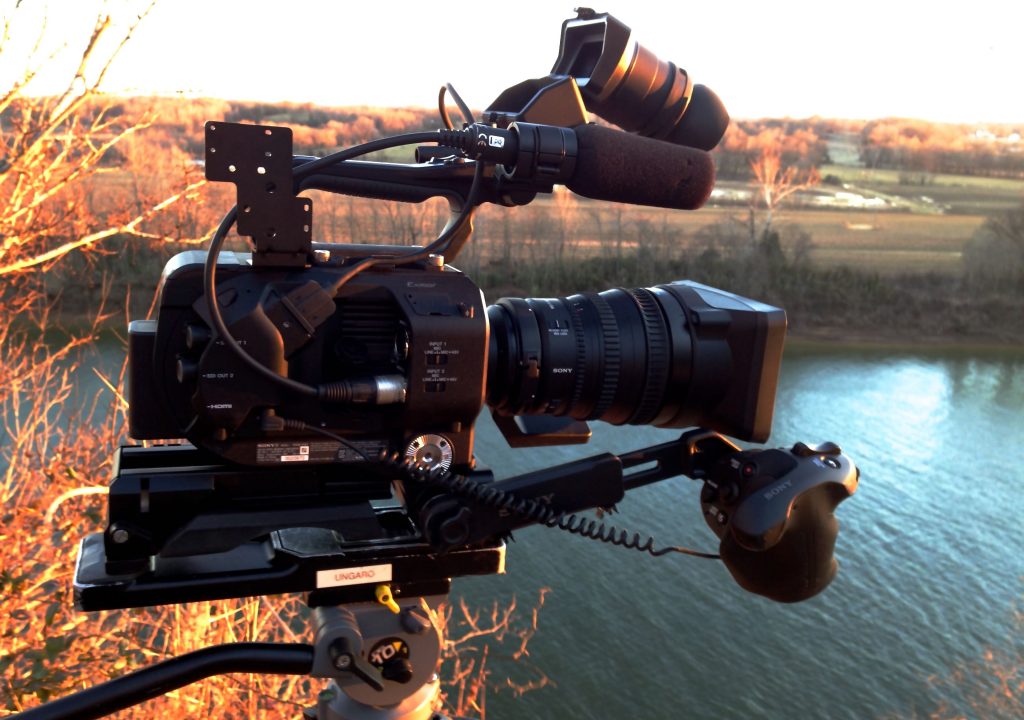Sony continues to kick out more and more cameras, yet which one is best for you and the job you have on hand?
You know and I know that as soon as this article was written it immediately became dated. That’s okay, because this is not nor is it intended to be a round-up of every single camera Sony has available. It’s a round-up of the best video cameras by Sony. These cameras have to be considered the “A” camera on a shoot, whether that’s a big production or a simple wedding video.
Let’s start at the top of the food chain.
THE SONY F65
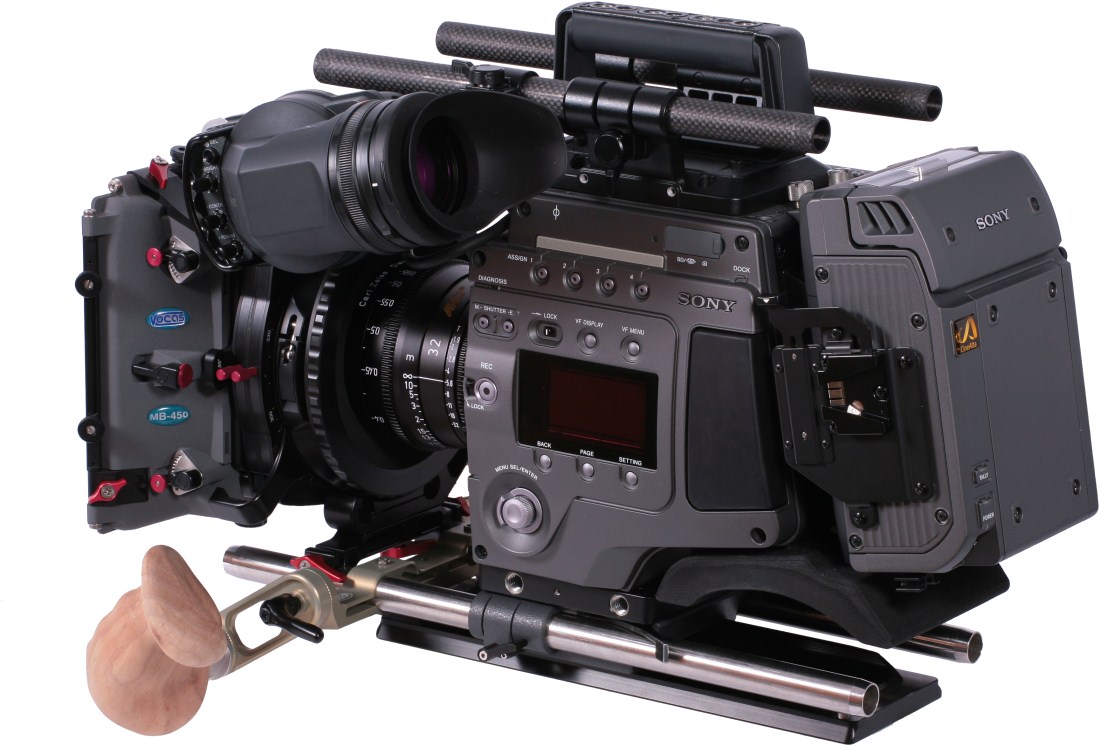 In 2012, Sony grabbed cinematographers’ attention with the highest resolution of any previous digital motion picture camera (8182 x 2160). 8K? well… Sony boasts the 8K sensor delivers “true” 4K but it doesn’t actually record 8K as far as I know. The F65 boasts extremely low noise, a wider color gamut than print film, 14 stops of dynamic range, and 120p with no windowing. There is no doubt this is Sony’s flagship camera, but are you going to shoot with it? Probably not. Unless you’re making feature films on a consistent basis. This camera requires a camera crew and the body weighs in at 11lbs. Once you start adding a lens, the huge recorder, and a matte box the camera likely weighs in closer to 16 or 17lbs. For most of us, me included, this is camera might be out of our league.
In 2012, Sony grabbed cinematographers’ attention with the highest resolution of any previous digital motion picture camera (8182 x 2160). 8K? well… Sony boasts the 8K sensor delivers “true” 4K but it doesn’t actually record 8K as far as I know. The F65 boasts extremely low noise, a wider color gamut than print film, 14 stops of dynamic range, and 120p with no windowing. There is no doubt this is Sony’s flagship camera, but are you going to shoot with it? Probably not. Unless you’re making feature films on a consistent basis. This camera requires a camera crew and the body weighs in at 11lbs. Once you start adding a lens, the huge recorder, and a matte box the camera likely weighs in closer to 16 or 17lbs. For most of us, me included, this is camera might be out of our league.
THE SONY F55
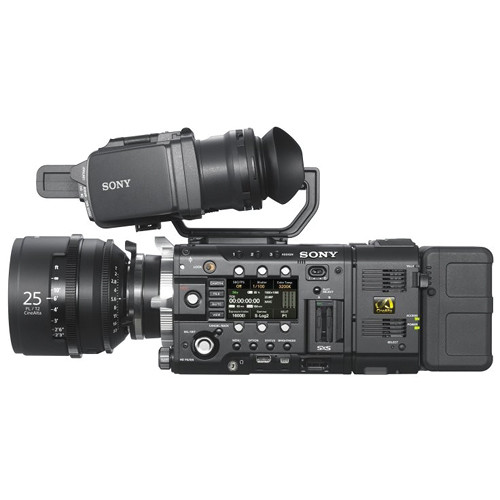 The F55 shares the same advanced color filter array tech used in Sony’s F65. That means for a lot less in purchasing dollars or rental budgets, you can get your hands on a camera that delivers a color gamut that is wider than 35mm print film. If you dreamed of shooting with the F65, but the producer laughed at your request, then the F55 is your next best choice. And, it’s a great choice. The F55 captures true 4K 4096 x 2160 and has internal high frame rates of 180fps at 1080 and 60fps at 4K. When one adds Sony’s AXS-R5 recorder the 2K raw frame rates jump to 240. It has a global shutter and with the raw recorder can capture 16-bit color. Remember 16-bit color captures 16x more tonal values than 12-bit. Like the F65, the F55 captures 14 stops of dynamic range and has internal neutral density filters. When is comes to lens choice the F55 offers up one of the most versatile mounts compatible with virtually all 35mm DSLR, and cinema lenses with simple inexpensive adapters. What is truly exceptional is how the F55 can be built up to fit whatever shoot at hand. With a base ISO of 1250, flexibility is this camera’s middle name. One can shoot just about any project with this camera: Features, Documentaries, Broadcast TV, Music Videos, and anything else. Just remember the global shutter and greater than film color gamut are going to cost you nearly twice as much when renting this camera.
The F55 shares the same advanced color filter array tech used in Sony’s F65. That means for a lot less in purchasing dollars or rental budgets, you can get your hands on a camera that delivers a color gamut that is wider than 35mm print film. If you dreamed of shooting with the F65, but the producer laughed at your request, then the F55 is your next best choice. And, it’s a great choice. The F55 captures true 4K 4096 x 2160 and has internal high frame rates of 180fps at 1080 and 60fps at 4K. When one adds Sony’s AXS-R5 recorder the 2K raw frame rates jump to 240. It has a global shutter and with the raw recorder can capture 16-bit color. Remember 16-bit color captures 16x more tonal values than 12-bit. Like the F65, the F55 captures 14 stops of dynamic range and has internal neutral density filters. When is comes to lens choice the F55 offers up one of the most versatile mounts compatible with virtually all 35mm DSLR, and cinema lenses with simple inexpensive adapters. What is truly exceptional is how the F55 can be built up to fit whatever shoot at hand. With a base ISO of 1250, flexibility is this camera’s middle name. One can shoot just about any project with this camera: Features, Documentaries, Broadcast TV, Music Videos, and anything else. Just remember the global shutter and greater than film color gamut are going to cost you nearly twice as much when renting this camera.
THE SONY F5
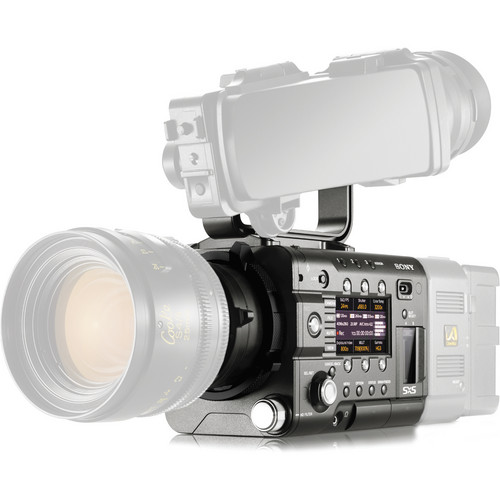 This is the little brother of the Sony F family. If one had the F55 and F5 side-by-side I would have trouble telling one from the other. The F5 has a black lens mount and the F55 has a silver one. The F5 and F55 share a lot of the same features like the same internal high frame rates of 180fps at 1080 and 60fps at 4K, internal neutral density filters, but it is under the hood where the differences are found. The F5 has the same sensor as the F55, but the debayer processing of that data is different. It does not have a global shutter, nor the wider than film color gamut. Just like the F55, the F5 is one of the most versatile cameras out there. One can build the camera to fit whatever shooting situation at hand. Another bonus is the F5 shares the same lens mount as the F55 and is compatible with nearly all 35mm DSLR, and cinema lenses. What my experience is with the sensor is it has very little rolling shutter, but not enough to be considered global. Because the F5 doesn’t have a global shutter its base ISO is 2000. This camera can be rigged for just about any shoot with one exception: the F5 might not fly on a stock DJI Ronin but it will on a Movi M15. I haven’t tried to fly it on a DJI Ronin with extension arms. As a DP I shoot a little bit of everything and this camera is meant to be able to do most of it. Music video one week and a documentary the next, this camera is going to be able to rise to any challenge thrown its way.
This is the little brother of the Sony F family. If one had the F55 and F5 side-by-side I would have trouble telling one from the other. The F5 has a black lens mount and the F55 has a silver one. The F5 and F55 share a lot of the same features like the same internal high frame rates of 180fps at 1080 and 60fps at 4K, internal neutral density filters, but it is under the hood where the differences are found. The F5 has the same sensor as the F55, but the debayer processing of that data is different. It does not have a global shutter, nor the wider than film color gamut. Just like the F55, the F5 is one of the most versatile cameras out there. One can build the camera to fit whatever shooting situation at hand. Another bonus is the F5 shares the same lens mount as the F55 and is compatible with nearly all 35mm DSLR, and cinema lenses. What my experience is with the sensor is it has very little rolling shutter, but not enough to be considered global. Because the F5 doesn’t have a global shutter its base ISO is 2000. This camera can be rigged for just about any shoot with one exception: the F5 might not fly on a stock DJI Ronin but it will on a Movi M15. I haven’t tried to fly it on a DJI Ronin with extension arms. As a DP I shoot a little bit of everything and this camera is meant to be able to do most of it. Music video one week and a documentary the next, this camera is going to be able to rise to any challenge thrown its way.
THE SONY FS7
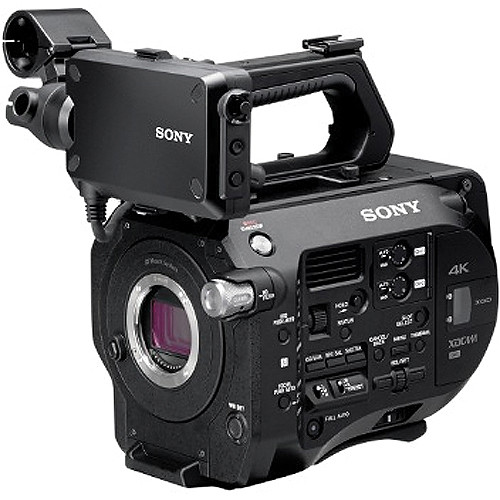 This is like a brother from another mother when it comes to the FS7 and F5. There are so many similarities between these two cameras with a few noted exceptions. Know this though, the image off the F5 and the FS7 are very similar. First, the obvious differences. The FS7 comes in a different body and is designed to be a hand-held shooter. Actually, everything about this camera is designed to make hand-held shooting easier: it features a monitor/evf, 4K S35mm sensor, records XAVC, exceptional 10bit 4:2:2 color, 14 stop of dynamic range, base ISO of 2000, and relatively affordable XQD media. The FS7 has UHD (3840 x 2160) recording and an e-mount which are the two bigger differences from the FS7 to the F5 that might not be so obvious. The two cameras also share similar internal neutral density filters and internal high frame rates of 180fps at 1080 and 60fps at 4K. One of the things I’ve noticed with the FS7’s e-mount is it can flex when you add a PL adapter, and a heavier lens. I noticed the flex when pulling focus with a follow focus unit. It wasn’t a ton of movement, but it’s something to be mindful of when building your camera rig. Other difference between the FS7 and the F5 is the FS7 isn’t as easy to be built out for any type of shooting situation like the F5 and F55. This isn’t a deal-breaker since the FS7 build works for nearly any shooting situation. This is an ideal camera for documentaries, industrials, unscripted TV, broadcast, music videos, and the occasional indie feature. If I was shooting a documentary this would be my camera of choice. No second guesses. I would take this camera to a developing country and feel confident I’d have no problems along the way. Would I mount it on a DJI Ronin with extension arms? Only if I don’t have to hand-hold the rig.
This is like a brother from another mother when it comes to the FS7 and F5. There are so many similarities between these two cameras with a few noted exceptions. Know this though, the image off the F5 and the FS7 are very similar. First, the obvious differences. The FS7 comes in a different body and is designed to be a hand-held shooter. Actually, everything about this camera is designed to make hand-held shooting easier: it features a monitor/evf, 4K S35mm sensor, records XAVC, exceptional 10bit 4:2:2 color, 14 stop of dynamic range, base ISO of 2000, and relatively affordable XQD media. The FS7 has UHD (3840 x 2160) recording and an e-mount which are the two bigger differences from the FS7 to the F5 that might not be so obvious. The two cameras also share similar internal neutral density filters and internal high frame rates of 180fps at 1080 and 60fps at 4K. One of the things I’ve noticed with the FS7’s e-mount is it can flex when you add a PL adapter, and a heavier lens. I noticed the flex when pulling focus with a follow focus unit. It wasn’t a ton of movement, but it’s something to be mindful of when building your camera rig. Other difference between the FS7 and the F5 is the FS7 isn’t as easy to be built out for any type of shooting situation like the F5 and F55. This isn’t a deal-breaker since the FS7 build works for nearly any shooting situation. This is an ideal camera for documentaries, industrials, unscripted TV, broadcast, music videos, and the occasional indie feature. If I was shooting a documentary this would be my camera of choice. No second guesses. I would take this camera to a developing country and feel confident I’d have no problems along the way. Would I mount it on a DJI Ronin with extension arms? Only if I don’t have to hand-hold the rig.
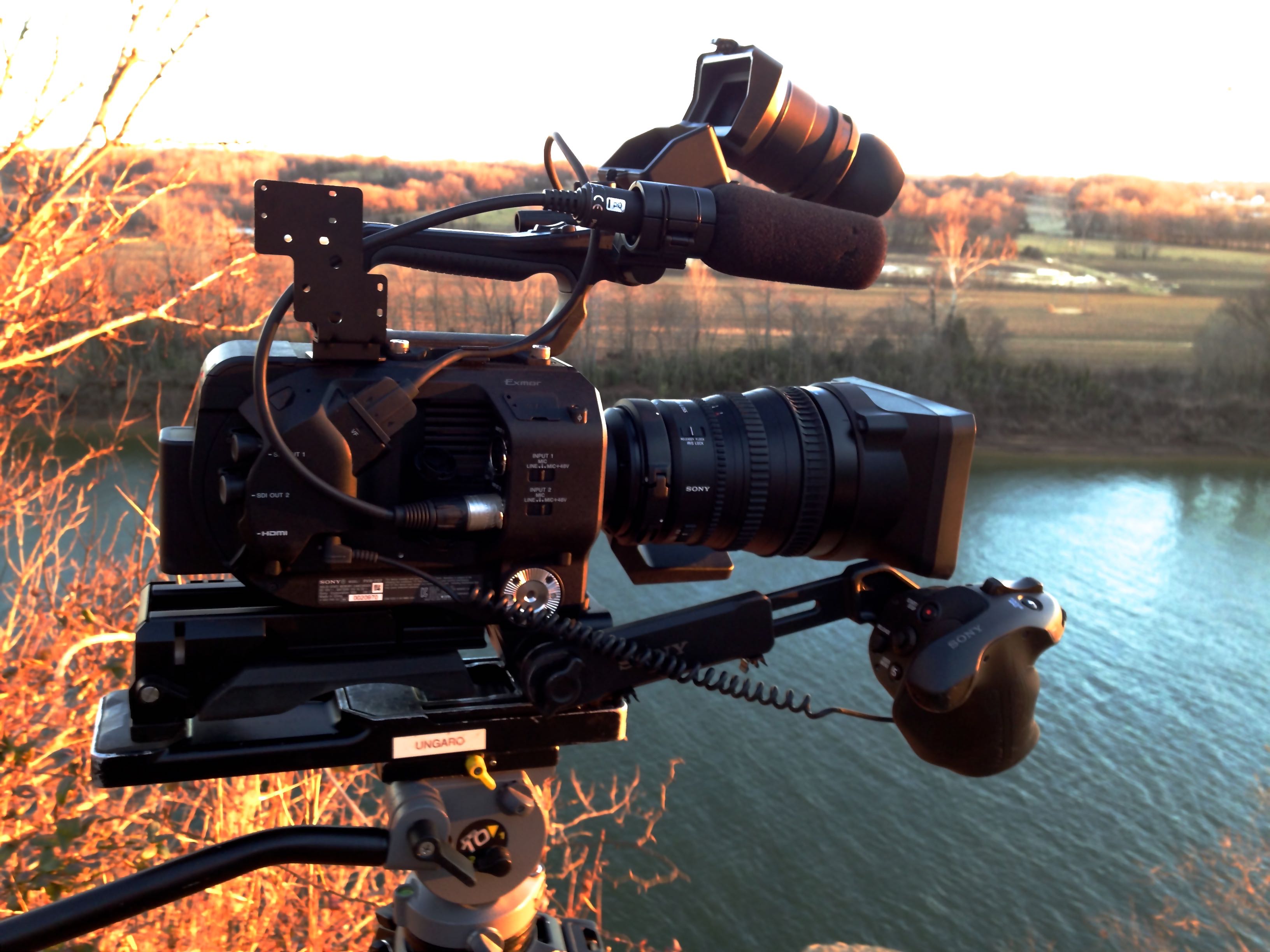
THE A7 SERIES MIRRORLESS FULL-FRAME CAMERAS
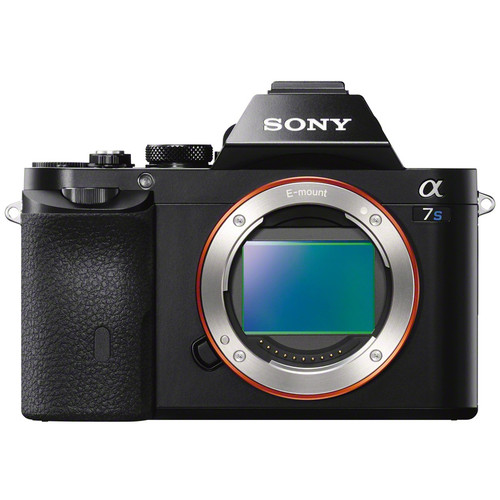 I will talk specifically about the A7s and the A7r II here. The low-light capability of the A7s is amazing. It is beyond human vision. The A7r II is not as light sensitive but has internal 4K 8 bit recording whereas the A7s only outputs 4K to a separate recorder. Both cameras shoot Sony’s S-Log 2 giving them very a respectable dynamic range. The A7s is the lowlight king on the market now and this is one of the reasons it is one of the more popular cameras out there. To be able to shoot in moonlight is one example where a shooter might use this camera. In my experience, the A7s is the camera du jour for weddings. Think about it, most wedding receptions are low-light events and the crazy sensitivity of the A7s means camera operators will always be able to get the shot at any ISO setting. Now, these are small cameras and one will need to be rigged up to make shooting easier. Not a crazy rig, but a good shoulder kit will help with the rolling shutter. Another bonus with these cameras is Sony realizes these are not just still photography cameras but video cameras so they offer the XLR-KRM which connects via hot shoe of the A7s and provides 2 XLR channels over line, mic and 48v phantom power inputs. It also has independent low cut, and 10db and 20db gain controls per channel. This effectively solves the audio issue found with many DSLRs. Do these cameras edit well against the F5, or the FS7? In my experience they do. The A7s is a great compliment to the FS7 and the F5 and might be the Sony camera you mount to a Movi M5 or DJI Ronin. A bonus, Sony’s 28-135mm F4 cinema zoom pairs with the A7s very well.
I will talk specifically about the A7s and the A7r II here. The low-light capability of the A7s is amazing. It is beyond human vision. The A7r II is not as light sensitive but has internal 4K 8 bit recording whereas the A7s only outputs 4K to a separate recorder. Both cameras shoot Sony’s S-Log 2 giving them very a respectable dynamic range. The A7s is the lowlight king on the market now and this is one of the reasons it is one of the more popular cameras out there. To be able to shoot in moonlight is one example where a shooter might use this camera. In my experience, the A7s is the camera du jour for weddings. Think about it, most wedding receptions are low-light events and the crazy sensitivity of the A7s means camera operators will always be able to get the shot at any ISO setting. Now, these are small cameras and one will need to be rigged up to make shooting easier. Not a crazy rig, but a good shoulder kit will help with the rolling shutter. Another bonus with these cameras is Sony realizes these are not just still photography cameras but video cameras so they offer the XLR-KRM which connects via hot shoe of the A7s and provides 2 XLR channels over line, mic and 48v phantom power inputs. It also has independent low cut, and 10db and 20db gain controls per channel. This effectively solves the audio issue found with many DSLRs. Do these cameras edit well against the F5, or the FS7? In my experience they do. The A7s is a great compliment to the FS7 and the F5 and might be the Sony camera you mount to a Movi M5 or DJI Ronin. A bonus, Sony’s 28-135mm F4 cinema zoom pairs with the A7s very well.
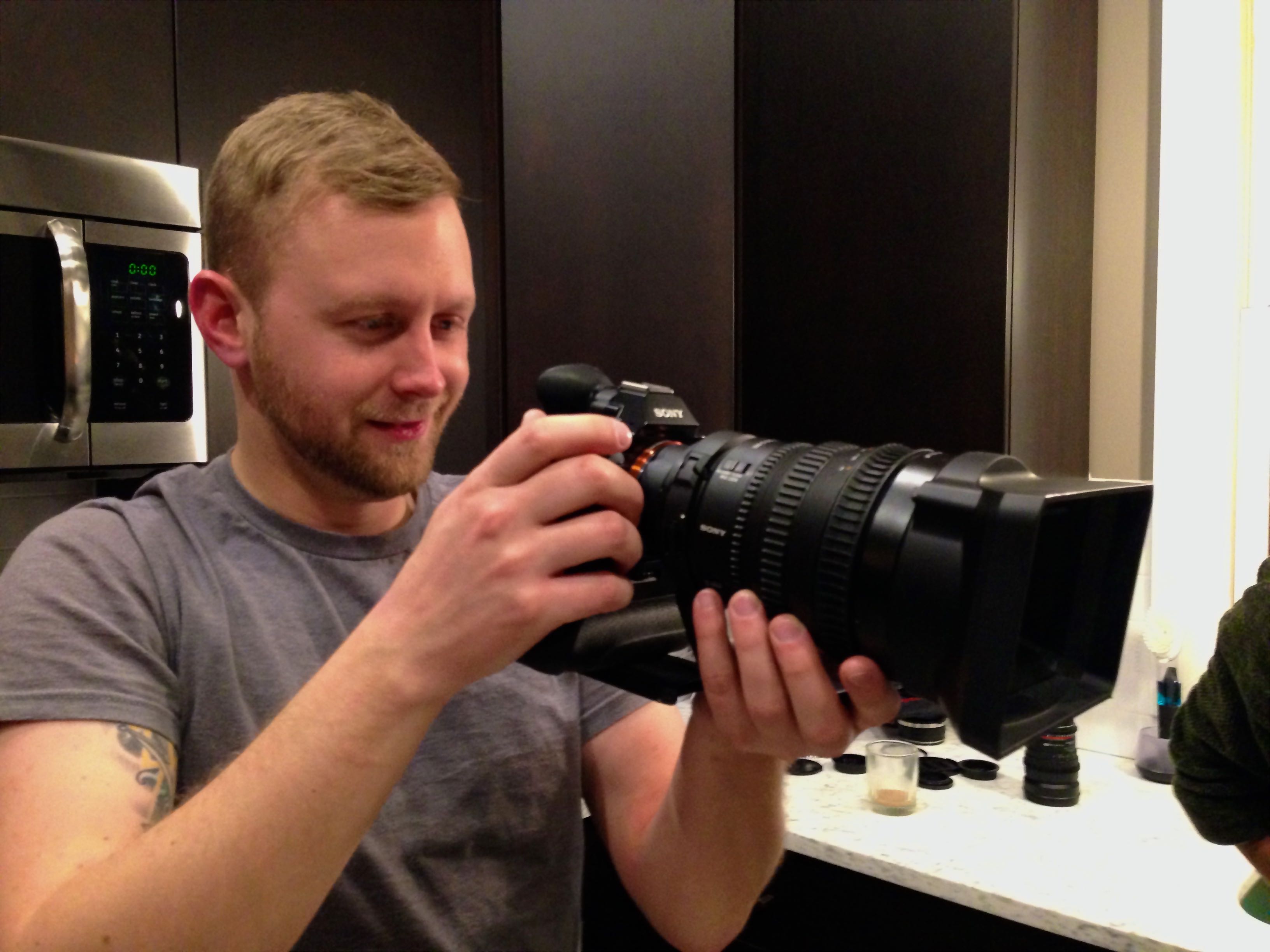
So how well do the F5, FS7 and A7s cut together? In my experience, very well. Take a look at this completely idiotic video of my buddy and I comparing the three cameras. Grab a beer and take a look, and yes… I showed this video in my FS7 camera review.
Drink Responsibly “camera review” video from Brian Hallett on Vimeo.
THE SONY FS700
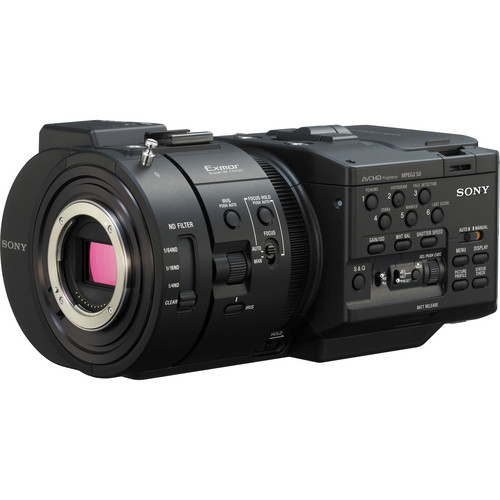 While this camera might be aging, I believe it is aging gracefully for a few reasons. One, it is 4K raw capable when paired with Sony’s AXS-R5 raw recorder. Two, this camera’s high frame rate capabilities are still relevant to the market. With the AXS-R5 recorder the FS700 can record full continuous raw recording up to 240fps at 2K and 60fps at 4K. Without the recorder the camera can capture these HFR in its burst mode. The downside of this camera is its awkward shape and its image. To me, the image off the sensor looks more DSLR and less like a cinema camera, but it isn’t a deal-breaker. Do your testing and find the look you want with your lighting and this camera will deliver. One of the benefits of its awkward shape and size is the FS700 fits on a DJI Ronin. Meaning you can shoot extremely dynamic moving shots at an incredibly high frame rate.
While this camera might be aging, I believe it is aging gracefully for a few reasons. One, it is 4K raw capable when paired with Sony’s AXS-R5 raw recorder. Two, this camera’s high frame rate capabilities are still relevant to the market. With the AXS-R5 recorder the FS700 can record full continuous raw recording up to 240fps at 2K and 60fps at 4K. Without the recorder the camera can capture these HFR in its burst mode. The downside of this camera is its awkward shape and its image. To me, the image off the sensor looks more DSLR and less like a cinema camera, but it isn’t a deal-breaker. Do your testing and find the look you want with your lighting and this camera will deliver. One of the benefits of its awkward shape and size is the FS700 fits on a DJI Ronin. Meaning you can shoot extremely dynamic moving shots at an incredibly high frame rate.
THE PWX-Z100
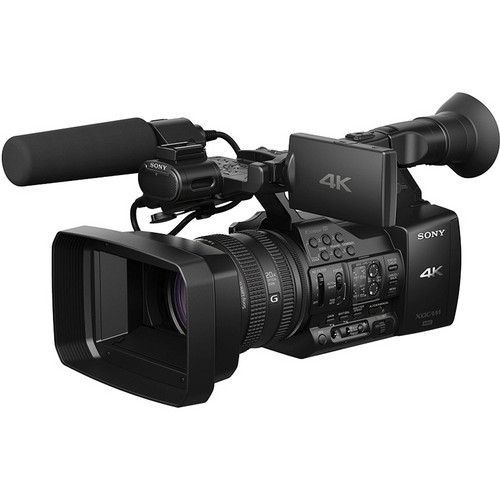 The 4K PXW-Z100 is a single operator handheld camcorder. Think more journalistic kind of camera and less cinematic.This might be someone’s go-to run & gun, find the story in a developing country, kind of camera. Capable of true 4K (4096×2160) recording at 50 and 60fps. This camera is now slouch with it’s XAVC 4:2:2 10 bit intra frame recording format. Plus the 4K video records at a maximum bit rate of 600Mbps. This camera features an all-in-one lens, internal neutral density filters and XLR audio. One can grab this camera and shoot a story without any accessories. The PWX-Z100 also has good low-light performance due to the back-illuminated Exmor R CMOS sensor which measures 1/2.3″. Where would I use this camera? I’d be comfortable with on a documentary, industrial, and smaller events situations. I could see a news station move to this camera for their multi-media journalists or one-man band journalists in the future if they so desired.
The 4K PXW-Z100 is a single operator handheld camcorder. Think more journalistic kind of camera and less cinematic.This might be someone’s go-to run & gun, find the story in a developing country, kind of camera. Capable of true 4K (4096×2160) recording at 50 and 60fps. This camera is now slouch with it’s XAVC 4:2:2 10 bit intra frame recording format. Plus the 4K video records at a maximum bit rate of 600Mbps. This camera features an all-in-one lens, internal neutral density filters and XLR audio. One can grab this camera and shoot a story without any accessories. The PWX-Z100 also has good low-light performance due to the back-illuminated Exmor R CMOS sensor which measures 1/2.3″. Where would I use this camera? I’d be comfortable with on a documentary, industrial, and smaller events situations. I could see a news station move to this camera for their multi-media journalists or one-man band journalists in the future if they so desired.
IN CONCLUSION
If you have not figured it out my intention is to list 4K cameras. Nearly all cameras new to the market have some flavor of 4K to the point 4K has become the norm. If you have a project and you have one of these cameras at hand you should be able to deliver very high quality content. The bonus with Sony’s F5, FS7 and A7s is the image between the three can be easily intercut together. If one is shooting with the F5, the FS7 might be their “B” camera. Let’s be honest, the FS7 would be one helluva “B” camera. Just as likely, the A7s can fill in as a “B” camera for the F55, F5 and FS7. Either way, the idea is to help you confidently choose the camera fitting your project and budget well. I hope I have helped in some way. For more information on Sony cameras go here.

Filmtools
Filmmakers go-to destination for pre-production, production & post production equipment!
Shop Now